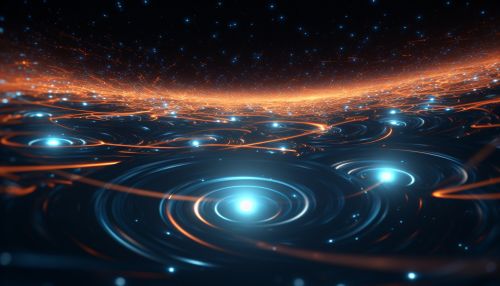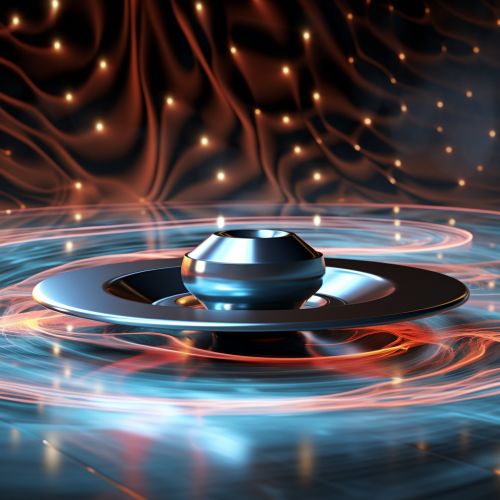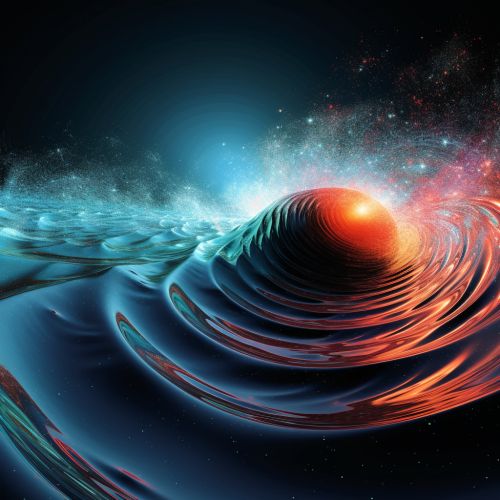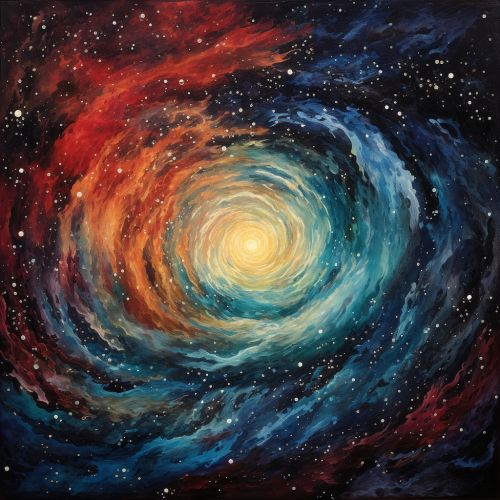Physics of Quantum Vacuum Fluctuations in Cosmology
Quantum Vacuum Fluctuations
Quantum vacuum fluctuations refer to the temporary changes in the amount of energy in a point in space, as allowed by the Heisenberg Uncertainty Principle. These fluctuations are a direct consequence of the quantum mechanical principle that pairs of particles and antiparticles can form spontaneously, exist for a brief moment, and then annihilate each other. This phenomenon is a manifestation of the inherent uncertainty in the properties of energy and time at the quantum level.


Quantum Field Theory and Vacuum Fluctuations
Quantum field theory (QFT) provides the theoretical framework for understanding quantum vacuum fluctuations. In QFT, every type of particle is associated with a specific quantum field. These fields exist everywhere in the universe, and their lowest energy state, or vacuum state, is not devoid of particles but is a sea of fluctuating particles and antiparticles. This is a direct result of the Heisenberg Uncertainty Principle, which states that the precise measurement of certain pairs of variables, such as position and momentum or energy and time, is impossible. This principle allows for the temporary violation of energy conservation, leading to the spontaneous creation and annihilation of particle-antiparticle pairs.


Vacuum Fluctuations and the Casimir Effect
One of the most significant experimental verifications of quantum vacuum fluctuations is the Casimir effect. This effect, predicted by Dutch physicist Hendrik Casimir in 1948, demonstrates that two uncharged metallic plates placed close together in a vacuum will experience an attractive force due to the quantum vacuum fluctuations. The Casimir effect provides a tangible demonstration of the reality of vacuum fluctuations and their physical effects.


Vacuum Fluctuations in Cosmology
Quantum vacuum fluctuations have significant implications in cosmology. They are believed to be the seed for the structure formation in the universe. During the inflationary period of the early universe, these quantum fluctuations were stretched to cosmic scales, leading to the formation of large-scale structures such as galaxies and clusters of galaxies.


Vacuum Fluctuations and Dark Energy
The concept of quantum vacuum fluctuations is also central to the understanding of dark energy, the mysterious force driving the accelerated expansion of the universe. Some theories propose that dark energy is the energy of the quantum vacuum itself. However, the calculated value of vacuum energy density from quantum field theory is vastly greater than the observed value of dark energy density in the universe, leading to the so-called "cosmological constant problem".


